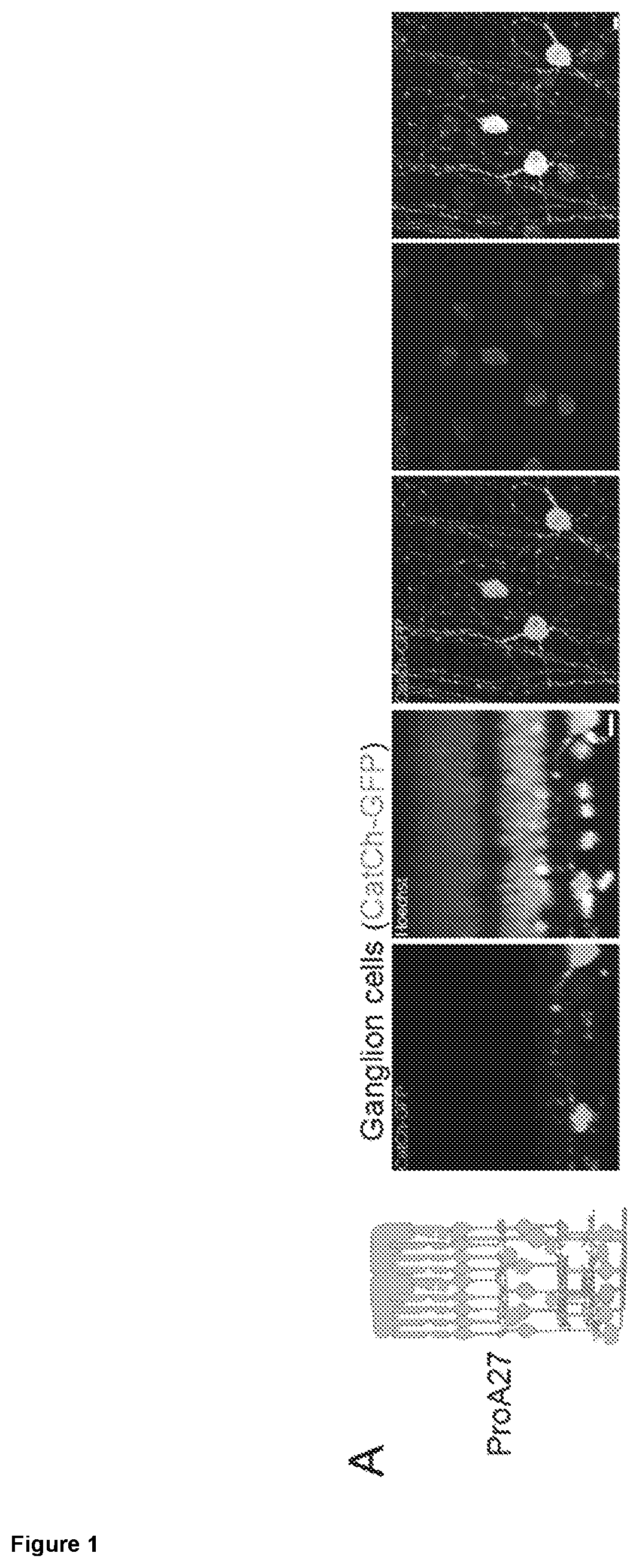Synp78 (proa27), a promoter for the specific expression of genes in retinal ganglion cells
a retinal ganglion cell and promoter technology, applied in the field of synp78 (proa27), can solve the problems of lack of extensive functional characterization of most cellular promoters, and achieve the effect of increasing contrast information and maintaining neurosensory retina function
- Summary
- Abstract
- Description
- Claims
- Application Information
AI Technical Summary
Benefits of technology
Problems solved by technology
Method used
Image
Examples
examples
[0103]Vector Construct
[0104]The present inventors have combined epigenetics, bioinformatics and neuroscience to find promoters which, when in the eye, drive gene expression only in specific ocular cells, e.g., retinal ganglion cells. For example, synthetic promoters included certain sequences upstream of the start codon of selected mouse retinal cell type-specific genes, for example, Serpinb1b gene (see, e.g., Siegert, S. et al., Nat. Neurosci. 15, 487-495 (2012).). The activity of these promoters were experimental tested and validated with in vivo cell-type targeting strategies in mouse retina and NHP retina.
[0105]The synthetic promoter, ProA27, used in this study consists of the 2000 bp sequence (SEQ ID NO: 1). A channelrhodopsin variant fused to green fluorescent protein (CatCh-GFP) coding sequence was inserted immediately after this promoter and the optimized Kozak sequence (GCCACC), and followed by a woodchuck hepatitis virus posttranscriptional regulatory element (WPRE) and SV...
PUM
| Property | Measurement | Unit |
|---|---|---|
| pH | aaaaa | aaaaa |
| wavelength | aaaaa | aaaaa |
| wavelength | aaaaa | aaaaa |
Abstract
Description
Claims
Application Information
 Login to View More
Login to View More - R&D
- Intellectual Property
- Life Sciences
- Materials
- Tech Scout
- Unparalleled Data Quality
- Higher Quality Content
- 60% Fewer Hallucinations
Browse by: Latest US Patents, China's latest patents, Technical Efficacy Thesaurus, Application Domain, Technology Topic, Popular Technical Reports.
© 2025 PatSnap. All rights reserved.Legal|Privacy policy|Modern Slavery Act Transparency Statement|Sitemap|About US| Contact US: help@patsnap.com

